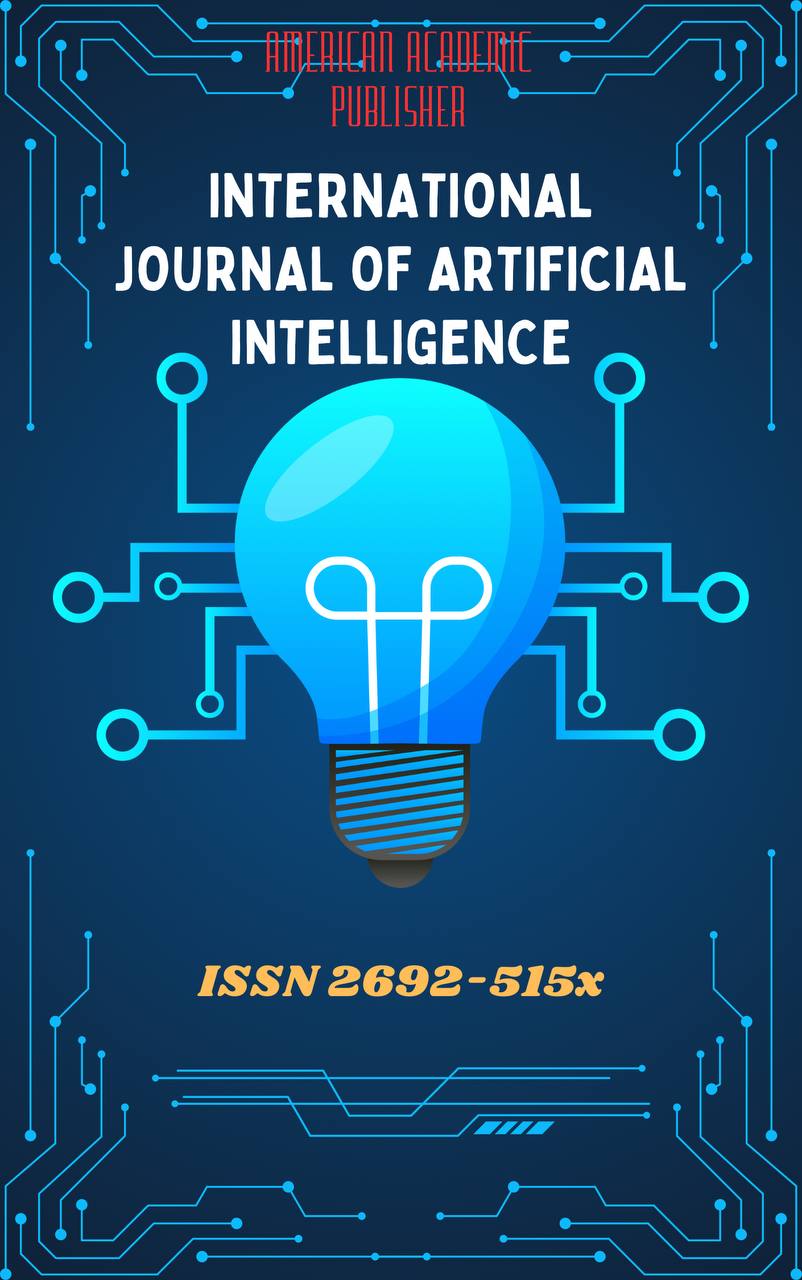 Articles
| Open Access |
Articles
| Open Access | EARLY DETECTION AND DIAGNOSIS OF THYROID CANCER BASED ON AN ARTIFICIAL INTELLIGENCE MODEL
Zufarova Nargiza Nigmat kizi , PhD student at Tashkent University of Information Technologies named after Muhammad al-KhwarizmiAbstract
Background: Thyroid cancer is the most prevalent endocrine malignancy, and its incidence has increased significantly worldwide over the past two decades. Early detection and accurate diagnosis play a critical role in improving treatment outcomes and survival rates.
Objective: This study aims to develop and evaluate an artificial intelligence (AI)-based model for the early detection and diagnosis of thyroid cancer using clinical, imaging, and cytological data.
Methods: A dataset of 1,200 thyroid patients (740 benign, 460 malignant) collected between 2018 and 2023 from three tertiary hospitals was analyzed. Key features included demographic data, thyroid function tests, ultrasound parameters, and fine-needle aspiration (FNA) cytology reports. Several machine learning algorithms—logistic regression, random forest, and convolutional neural networks (CNNs)—were trained and validated. Model performance was assessed using sensitivity, specificity, accuracy, and area under the ROC curve (AUC).
Results: The CNN model achieved the best diagnostic accuracy (94.6%), with a sensitivity of 92.3% and specificity of 96.1%, outperforming conventional models. The AI system demonstrated reliable differentiation between benign and malignant nodules using ultrasound and cytology images.
Conclusion: The proposed AI model provides a promising non-invasive tool for early thyroid cancer detection and diagnostic support. Integration of AI systems into routine endocrinological practice can improve clinical decision-making and reduce diagnostic errors.
Keywords
thyroid cancer, artificial intelligence, machine learning, deep learning, diagnosis, early detection, CNN model
References
Sung H, Ferlay J, Siegel RL, et al. CA Cancer J Clin. 2023;73(1):31–56.
Li X, Zhang S, Liu J, et al. Eur Radiol. 2022;32(9):6256–6267.
Yoo S, Kim JH, Choi Y, et al. Thyroid. 2023;33(2):145–157.
Moon WJ, Jung SL, Lee JH, et al. Radiology. 2008;247(3):762–770.
Esteva A, Topol EJ. Nat Med. 2019;25(1):44–56.
Russ G, Bonnema SJ, Erdogan MF, et al. Eur Thyroid J. 2017;6(5):225–237.
Zhou L, Xu R, Li J, et al. Front Endocrinol. 2021;12:727946.
Choi YJ, Baek JH, Park HS, et al. Thyroid. 2020;30(7):968–975.
Sung H, Ferlay J, Siegel RL, et al. Global cancer statistics 2023: GLOBOCAN estimates of incidence and mortality worldwide. CA Cancer J Clin. 2023;73(1):31–56.
Li X, Zhang S, Liu J, et al. Deep learning for thyroid ultrasound diagnosis: a multicenter study. Eur Radiol. 2022;32(9):6256–6267.
Yoo S, Kim JH, Choi Y, et al. AI-assisted cytology in thyroid nodules: improving diagnostic confidence. Thyroid. 2023;33(2):145–157.
Esteva A, Topol EJ. The potential of artificial intelligence in healthcare. Nat Med. 2019;25(1):44–56.
He K, Zhang X, Ren S, Sun J. Deep residual learning for image recognition. Proc IEEE CVPR. 2016;770–778.
Moon WJ, Jung SL, Lee JH, et al. Benign and malignant thyroid nodules: US differentiation—multicenter retrospective study. Radiology. 2008;247(3):762–770.
Zhou L, Xu R, Li J, et al. Machine learning models for predicting thyroid cancer risk: comparison of algorithms and feature sets. Front Endocrinol. 2021;12:727946.
Russ G, Bonnema SJ, Erdogan MF, et al. European Thyroid Association guidelines for ultrasound malignancy risk stratification. Eur Thyroid J. 2017;6(5):225–237.
Pedregosa F, Varoquaux G, Gramfort A, et al. Scikit-learn: machine learning in Python. J Mach Learn Res. 2011;12:2825–2830.
Choi YJ, Baek JH, Park HS, et al. A computer-aided diagnosis system using deep learning for the evaluation of thyroid nodules on ultrasound: initial clinical assessment. Thyroid. 2020;30(7):968–975.
Article Statistics
Downloads
Copyright License

This work is licensed under a Creative Commons Attribution 4.0 International License.

